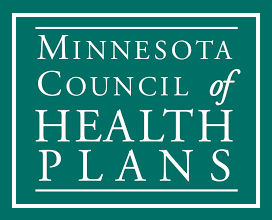Understanding Minnesota’s Health Care Tax Landscape
Five key takeaways for state policymaking
A new report on the health care tax landscape in Minnesota provides a helpful overview of the different taxes and fees in the state paid by health care providers, insurers, employers, and individuals. The review by the Minnesota Center for Fiscal Excellence also breaks down the laws and entities which govern these tax revenues and the use of these funds.
Here are five key takeaways for state policymakers from the review:
- State regulation and taxing authority differs by type of insurance coverage
Minnesota’s health care ecosystem is distinctive, with a significant concentration of large employers, many of which self-insure, operating outside state regulations. Moreover, the state runs a Basic Health Program, known as MinnesotaCare, offering subsidized coverage to individuals who may otherwise be enrolled in the individual market.
Minnesota’s health care taxes are multifaceted, impacting various stakeholders differently. State jurisdiction imposes taxes on providers, insurers, and HMOs, but the application of these taxes varies across the different types of coverage. The self-insured group, the largest source of health care coverage for Minnesotans, has the lowest health care tax rate of any market due to state taxes effectively only applying as higher costs that are passed through. On the other hand, private markets, which include large group, small group, and individual coverage, are directly subject to state taxation and pay the highest tax rate of any marketplace. This is because in addition to the provider tax and MA hospital surcharge, they also pay an insurance premium tax, with individuals purchasing insurance through MNsure also subject to a 3.5% exchange fee. HMOs similarly pay a higher tax rate. The provider tax is the largest health care tax, with revenue exceeding $1.5 billion each state fiscal biennium.
- Where the tax revenues go: State Health Care Funding Accounts to support affordability and access
The state channels revenues from these taxes into dedicated funds, such as the Health Care Access Fund (HCAF), aimed at enhancing health care accessibility and affordability. The HCAF primarily relies on a 1.8% provider tax, alongside federal payments and gross premium taxes. These funds support programs like Medical Assistance and MinnesotaCare, with expenditures projected to rise significantly due to the state increasing the HCAF share of Medical Assistance funding.
- The Role of the Premium Security Plan
Minnesota’s Premium Security Plan (MPSP) plays a crucial role in stabilizing the individual health insurance market. By providing secondary insurance for high-cost claims, the MPSP lowers financial risks for insurers, thereby promoting affordability and availability of insurance options. Although authorized to operate until 2027, the MPSP is only funded through the 2025 plan year, risking continuing affordability in the individual market. The Council commissioned RAND Health Care to study various ways to mitigate that looming challenge.
- Managed care contracts and the impact on the state budget
For those Minnesotans who are covered under the state’s public programs, like Medical Assistance and MinnesotaCare, roughly 85% of them are in managed care. Managed care organizations operate subject to withholds and payment delays -totaling of 8% of their contracted payments- which have a significant impact on the state budget. Together, these managed care shifts in Medical Assistance and MinnesotaCare total roughly $1.5 billion.
- Navigating Post-COVID Health Coverage Challenges
The COVID-19 pandemic has further highlighted the complexities of health care. Federal relief funds enabled continuous enrollment in publicly subsidized health care programs, leading to a significant uptick in enrollees. However, the sunset of pandemic-era Medicaid continuous coverage requirements and reduced federal funding is resulting in substantial losses of coverage. Minnesota’s managed care plans has been working closely with the Department of Human Services on mitigation strategies, emphasizing the need for adaptive policies in response to the evolving health care landscape.
In conclusion, Minnesota’s health care tax and expenditure system is complex, with various stakeholders navigating a multifaceted landscape of taxes, expenditures, and coverage challenges. Transparency and understanding of these mechanisms are essential for ensuring equitable access to health care services and effective resource allocation in the state. As state policymakers consider health reforms, it is important to consider the various complexities across the entire health care tax and funding landscape and potential implications for any changes.

